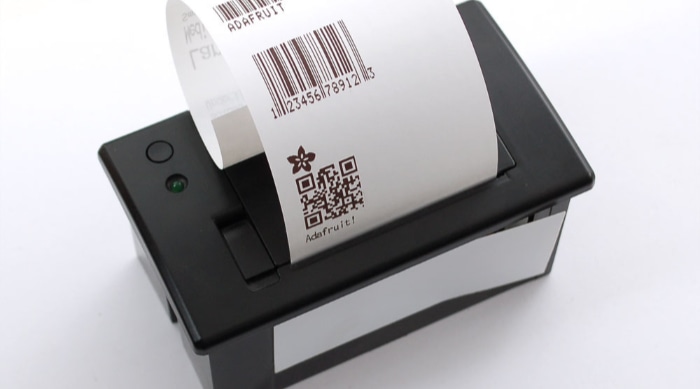Inkless Printers: The Future of Printing Technology

Captivating yet unassuming, inkless printers are swiftly redefining our expectations of what printing technology can achieve. For years, traditional ink-based printers have dominated the scene, creating both vivid documents and a steady stream of replacement cartridge sales.
But what if the notion of a printer requiring ink cartridges could be entirely eliminated? Enter the inkless printer—a technological marvel designed to print without relying on ink, toner, or ribbons.
History of Inkless Printing
Imagine a world where the inkless printer wasn't an alternative but the only option. While it might seem like science fiction, the origins of inkless printing trace back several decades, revealing a history rich with innovation and technological evolution.
Early Concepts and Initial Development
The first inklings of inkless printing technologies began to appear in the late 20th century, particularly with the advent of thermal printing. This method bypassed the need for ink by using heat to create images or text on specially coated paper.
In those early days, thermal printing was largely relegated to applications like fax machines and receipt printers.
Thermal Printing as a Precursor
Although thermal printing might not be the first thing that comes to mind when one thinks of inkless printing, it played a critical role in the development of the technology. It provided proof of concept that text and images could be rendered onto paper without the use of ink cartridges or toner.
Introduction of Zero Ink Technology
One of the most significant milestones in inkless printing is the emergence of Zero Ink (ZINK) technology. Developed in the early 21st century, ZINK allowed for full-color printing without the need for any ink cartridges.
The technology relies on paper embedded with color crystals, activated through precise applications of heat.
Commercialization and Market Entry
The commercial viability of inkless printers saw an upswing with the growing concerns over environmental sustainability. Manufacturers found a ready market among eco-conscious consumers and organizations looking to minimize waste.
Portable inkless printers, often paired with smartphones, became particularly popular due to their convenience and minimal ecological impact.
Recent Advancements and Research
In the past few years, there have been significant strides in improving the quality and reliability of inkless prints. Researchers are currently exploring other methods beyond thermal and ZINK technologies, such as electrostatic methods and digital light processing, to achieve even better print quality and speed.
How Inkless Printers Work
The marvel of inkless printing resides not just in its ability to sidestep the use of ink, but also in the complex technology that makes this possible. If you've ever wondered about the inner workings of an inkless printer, you're not alone.
The Basics of Thermal Printing
One of the most commonly used technologies in inkless printing is thermal printing. In this method, a thermal printhead applies heat to specially coated paper.
The heat triggers a chemical reaction in the paper's coating, causing it to change color and form text or images. This technique is widely used in applications like receipt printing and barcode labels.
The Role of Zero Ink Technology
ZINK technology presents another fascinating avenue in inkless printing. Unlike thermal printing, which typically produces monochrome results, ZINK technology allows for full-color printing.
ZINK paper comes embedded with multiple layers of dye crystals. When heat is applied through the printer's thermal printhead, these crystals melt and mix to produce a range of colors. The result is a vibrant, full-color print without the need for ink cartridges.
Digital Light Processing Methods
Although less common in consumer printers, digital light processing (DLP) has found its place in industrial inkless printing. DLP uses a digital projector screen to flash images onto a photosensitive material.
The exposure to light causes the material to harden, thereby creating a printed layer. This method is often used in additive manufacturing and 3D printing.
Electrostatic Printing Techniques
Electrostatic printing offers yet another inkless method, commonly used in photocopiers. A drum or belt holds an electrostatic charge, attracting a form of toner that is actually a colored powder.
The charged drum or belt then transfers the powder onto paper, where it is permanently affixed using heat.
Advantages of Inkless Printing

While ink-based printers still enjoy widespread use, the advent of inkless technology brings a host of advantages that are hard to overlook. Ranging from cost savings to environmental benefits, inkless printers offer a compelling set of features that make them an increasingly popular choice.
Cost-Effectiveness Over Time
One of the most prominent benefits of inkless printing is its cost-effectiveness. Traditional printers require frequent replacement of ink cartridges or toner, which can be costly over time.
Inkless printers, on the other hand, have fewer consumable parts, resulting in lower long-term operational costs. Although the initial investment in an inkless printer may be higher, the lifetime costs often prove to be lower.
Environmental Benefits
Inkless printing technology significantly reduces waste. Traditional ink cartridges are often difficult to recycle and end up in landfills, contributing to environmental pollution.
Inkless printers minimize this waste by eliminating the need for cartridges altogether. The environmental footprint is further reduced when using thermal printing methods that employ recyclable paper.
Compact and Portable Design
Another overlooked advantage is portability. Inkless printers often come in smaller form factors than their ink-based counterparts.
This compact size makes them ideal for mobile operations and small workspaces. Portable models easily connect to smartphones and other devices, enabling convenient printing on the go.
Less Maintenance Required
The absence of ink cartridges and toner in inkless printers results in fewer maintenance requirements. There's no need to clean printheads or deal with ink spills.
This lack of maintenance not only saves time but also reduces the likelihood of printer downtime, ensuring a smoother operation overall.
Limitations of Inkless Printing
While inkless printing offers a multitude of advantages, it is not without its limitations. From restricted color capabilities to paper dependencies, these challenges can serve as hurdles in certain applications.
Color Limitations
One significant drawback of some inkless printing methods, particularly thermal printing, is the limited color range. Unlike traditional inkjet or laser printers that can produce a wide array of hues, thermal printers are often limited to black and white or grayscale printing.
Even with advanced ZINK technology, the color fidelity may not match that of high-end ink-based printers.
Special Paper Requirements
Inkless printers often require specially coated paper to function correctly. This is especially true for thermal and ZINK printing technologies.
The special paper can be more expensive than standard printer paper and may not be readily available in all sizes or types, restricting the printer's versatility.
Durability Concerns
Another concern is the longevity of inkless prints. Specifically, thermal prints may fade over time when exposed to heat or direct sunlight.
This makes them less suitable for documents that require long-term archival. The susceptibility to environmental factors could limit the use of inkless printers in certain industries, such as legal or medical record-keeping.
Limited Applications
Inkless printing technology is not as versatile as traditional printing when it comes to the types of media it can handle. For example, printing on fabric, textured paper, or other non-standard materials is often not possible with inkless printers.
This limits their use in more specialized applications, such as crafting or textile printing.
Initial Cost Barriers
While inkless printers can be more cost-effective in the long run, the initial investment can be a barrier for some users. High-quality inkless printers, especially those capable of color printing using ZINK technology, can come with a premium price tag.
This might discourage small businesses or individual users from making the switch from ink-based printers.
Comparing Inkless to Traditional Printers
The age-old question of whether to stick with what's familiar or venture into new technological terrains is particularly relevant when discussing inkless versus traditional printers. Each type has its distinct advantages and limitations, and the optimal choice depends on specific needs and applications.
Cost Implications
One of the first considerations for any printer purchase is cost. Traditional ink-based printers usually have a lower upfront cost, but the recurring expenses for ink cartridges can add up over time.
Inkless printers may require a higher initial investment but generally incur lower operating costs due to the absence of ink cartridges or toner.
Print Quality
In terms of print quality, traditional ink-based printers often have the upper hand, particularly for high-resolution photo printing. They offer a broad spectrum of colors and finer details.
Inkless printers, while improving, may still lag in color fidelity and resolution, especially in thermal printing methods.
Maintenance Needs
Traditional printers require regular maintenance, including cleaning the printheads and replacing ink cartridges, which can be both time-consuming and costly. Inkless printers, with their minimal consumables, typically have fewer maintenance demands, leading to less downtime and a more straightforward user experience.
Environmental Impact
From an environmental standpoint, inkless printers have a more favorable profile. They generate less waste because there are no ink cartridges to dispose of.
Traditional ink cartridges are often non-biodegradable and contribute to landfill waste, despite recycling programs. The use of specially coated paper in inkless printing methods can also be more eco-friendly, especially when recycled options are available.
Conclusion
We've dived into the fascinating world of inkless printing, from its historical background to the intricate technologies that make it possible. Alongside the benefits of cost-effectiveness, portability, and environmental sustainability, there are limitations like restricted color options and special paper requirements to consider.
A comparison with traditional printers reveals that neither is universally superior; each has unique attributes that may better serve specific needs and applications. Thoroughly weighing these elements allows for a more nuanced view, helping you to select the most appropriate printing solution for your particular circumstances.


